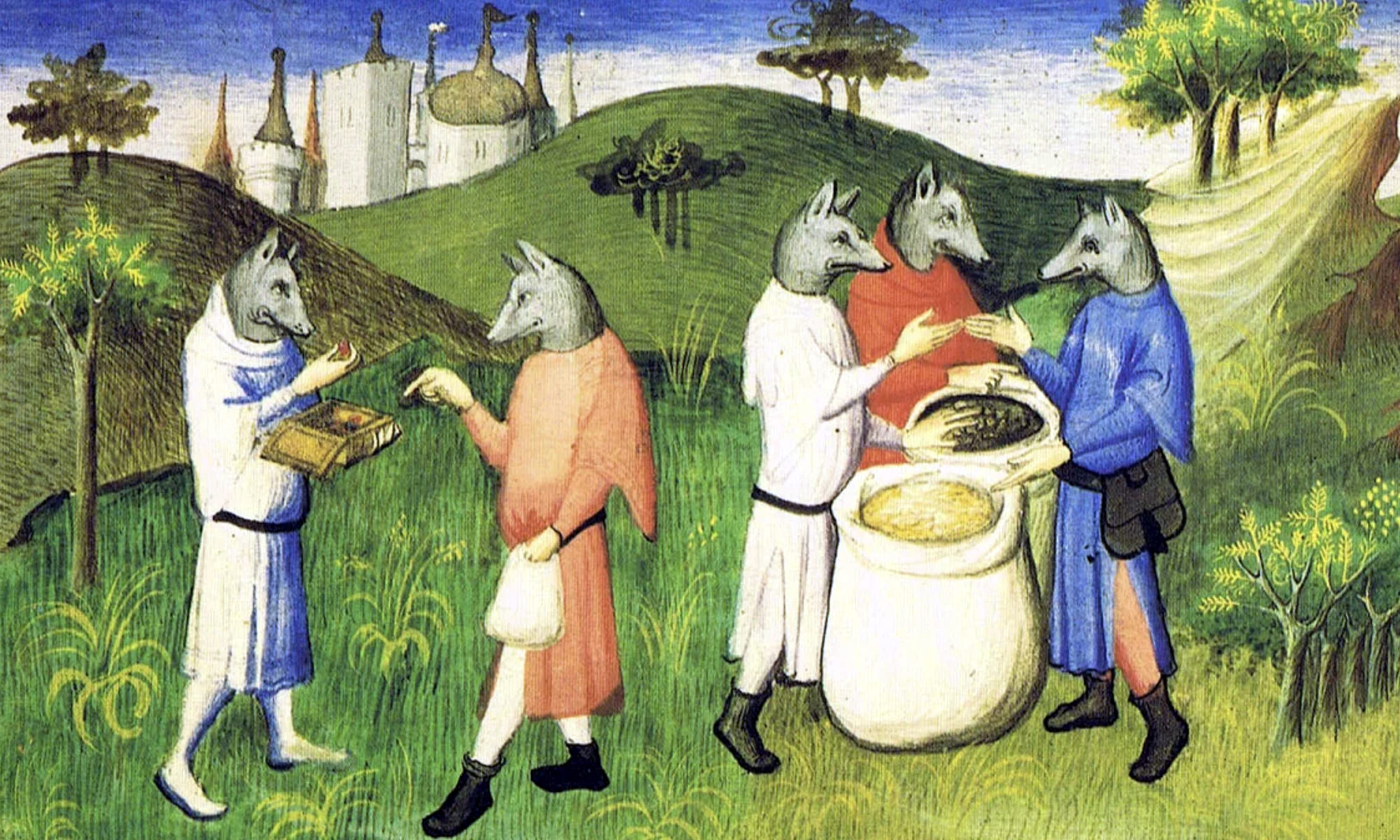A werewolf is a human with the ability to shapeshift into a wolf, either purposely or after being placed under a curse or affliction (often a bite or scratch from another werewolf) and especially on the night of a full moon. Nowadays the werewolf phenomena is linked, in occult circles, to very dense etheric doubles used by shamans or witches for astral travel.
Early sources for belief in this ability or affliction, called lycanthropy, are Petronius (27–66) and Gervase of Tilbury (1150–1228). The werewolf is a widespread concept in European folklore, existing in many variants, which are related by a common development of a Christian interpretation of underlying European folklore developed during the medieval period. From the early modern period, werewolf beliefs also spread to the New World with colonialism. Belief in werewolves developed in parallel to the belief in witches, in the course of the Late Middle Ages and the Early Modern period. Like the witchcraft trials as a whole, the trial of supposed werewolves emerged in what is now Switzerland (especially the Valais and Vaud) in the early 15th century and spread throughout Europe in the 16th, peaking in the 17th and subsiding by the 18th century.
The persecution of werewolves and the associated folklore is an integral part of the “witch-hunt” phenomenon, albeit a marginal one, accusations of lycanthropy being involved in only a small fraction of witchcraft trials. During the early period, accusations of lycanthropy (transformation into a wolf) were mixed with accusations of wolf-riding or wolf-charming.
The case of Peter Stumpp (1589) led to a significant peak in both interest in and persecution of supposed werewolves, primarily in French-speaking and German-speaking Europe. The phenomenon persisted longest in Bavaria and Austria, with persecution of wolf-charmers recorded until well after 1650, the final cases taking place in the early 18th century in Carinthia and Styria.
How to change into a werewolf
Several methods for becoming a werewolf have been reported, one of the simplest being the removal of clothing and putting on a belt made of wolfskin, probably as a substitute for the assumption of an entire animal skin (which also is frequently described). In other cases, the body is rubbed with a magic salve. Drinking rainwater out of the footprint of the animal in question or from certain enchanted streams were also considered effectual modes of accomplishing metamorphosis. The 16th-century Swedish writer Olaus Magnus says that the Livonian werewolves were initiated by draining a cup of specially prepared beer and repeating a set formula. Ralston in his Songs of the Russian People gives the form of incantation still familiar in Russia. In Italy, France and Germany, it was said that a man or woman could turn into a werewolf if he or she, on a certain Wednesday or Friday, slept outside on a summer night with the full moon shining directly on his or her face.
In other cases, the transformation was supposedly accomplished by Satanic allegiance for the most loathsome ends, often for the sake of sating a craving for human flesh. “The werewolves”, writes Richard Verstegan (Restitution of Decayed Intelligence, 1628),
..“are certayne sorcerers, who having annoynted their bodies with an ointment which they make by the instinct of the devil, and putting on a certayne inchaunted girdle, does not only unto the view of others seem as wolves, but to their own thinking have both the shape and nature of wolves, so long as they wear the said girdle. And they do dispose themselves as very wolves, in worrying and killing, and most of humane creatures.”
The phenomenon of repercussion, the power of animal metamorphosis, or of sending out a familiar, real or spiritual, as a messenger, and the supernormal powers conferred by association with such a familiar, are also attributed to the magician, male and female, all the world over; and witch superstitions are closely parallel to, if not identical with, lycanthropic beliefs, the occasional involuntary character of lycanthropy being almost the sole distinguishing feature. In another direction the phenomenon of repercussion is asserted to manifest itself in connection with the bush-soul of the West African and the nagual of Central America; but though there is no line of demarcation to be drawn on logical grounds, the assumed power of the magician and the intimate association of the bush-soul or the nagual with a human being are not termed lycanthropy.
The curse of lycanthropy was also considered by some scholars as being a divine punishment. Werewolf literature shows many examples of God or saints allegedly cursing those who invoked their wrath with werewolfism. Such is the case of Lycaon, who was turned into a wolf by Zeus as punishment for slaughtering one of his own sons and serving his remains to the gods as a dinner. Those who were excommunicated by the Roman Catholic Church were also said to become werewolves.
The power of transforming others into wild beasts was attributed not only to malignant sorcerers, but to Christian saints as well. Omnes angeli, boni et Mali, ex virtute naturali habent potestatem transmutandi corpora nostra (“All angels, good and bad have the power of transmutating our bodies”) was the dictum of St. Thomas Aquinas. St. Patrick was said to have transformed the Welsh King Vereticus into a wolf; Natalis supposedly cursed an illustrious Irish family whose members were each doomed to be a wolf for seven years. In other tales the divine agency is even more direct, while in Russia, again, men supposedly became werewolves when incurring the wrath of the Devil.
A notable exception to the association of Lycanthropy and the Devil, comes from a rare and lesser known account of an 80-year-old man named Thiess. In 1692, in Jürgensburg, Livonia, Thiess testified under oath that he and other werewolves were the Hounds of God. He claimed they were warriors who went down into hell to do battle with witches and demons. Their efforts ensured that the Devil and his minions did not carry off the grain from local failed crops down to hell. Thiess was steadfast in his assertions, claiming that werewolves in Germany and Russia also did battle with the devil’s minions in their own versions of hell, and insisted that when werewolves died, their souls were welcomed into heaven as reward for their service. Thiess was ultimately sentenced to ten lashes for Idolatry and superstitious belief.










